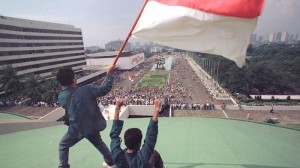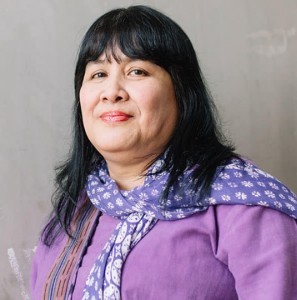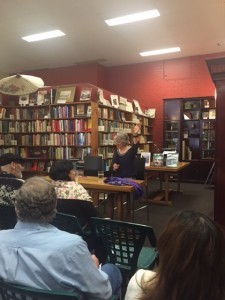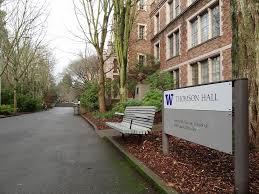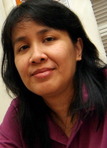Leila S. Chudori's Blog
October 20, 2017
SCHEDULE AT UBUD WRITERS AND READERS FESTIVAL OCT 2017
OCT 26, 2017, 10:15 – 11:30
NEKA, Jl Raya Sanggingan
NH. DINI : A LIVING LITERARY LEGEND
Leila S.Chudori : Moderator
A living legend of Indonesian literature, Nh. Dini will reveal the flame that sustained her prolific writing career spanning more than five decades. Listen in as she narrates her colorful life, from flight attendant to environmentalist, along with her brave battle against gender-based injustice. It’s a journey for which she is respected and adored as one of the country’s first feminist writers.
OCT 27, 2017, 09.00 – 10.00
NEKA, Jl Raya Sanggingan
Madeleine Thien: Do Not Say We Have Nothing
Leila S.Chudori : Moderator
Spanning decades and diasporas, Madeleine Thien’s stories “remind us what fiction can do” (New Statesman). She takes the UWRF stage to discuss the Booker-shortlisted Do Not Say We Have Nothing, an enchanting and wrenching novel of revolutionary idealism, music and silence, and a body of work both grand in scope and exquisite in detail.
OCT 27, 2017, 17.30 – 19.00
Warwick Ibah Luxury Villas & Spa
Jl Raya Campuhan
Novel Launch LAUT BERCERITA, by Leila S.Chudori
After launching “Pulang” (Home) last 2012 that became the winner of Khatulistiwa Literray Award in 2013, this is Leila’s second novel on the events preceding to the 1998 Reformation. It is a story about the loss felt by families and friends who disappeared; whose chests feel empty with the search for answers. It’s a story of activists who were kidnapped and never came back, and of betrayal and torture by those for whom power is more valuable than lives
Reading by : Warih Wiratsana and Ayu Weda
Books written by Leila in Bahasa Indonesia and English will be available
Presented by : Kepustakaan Populer Gramedia and UWRF
OCT 28, 2017, 10:15 – 11:30
Taman Baca. Festival Hub, Jl. Raya Sanggingan
HALF A CENTURY OF ASEAN
In August 1967, ASEAN began as a collective of five countries. Now ten strong, it celebrates 50 years in 2017. We invite writers from across the region to share their perspectives on literary life in Southeast Asia, and to question whether half a century of the alliance has given rise to an ASEAN identity.
Bernice Chauly, Marc Nair, Jhoanna Lynn B Cruz, Intan Paramaditha, Leila S.Chudori
OCT 28, 2017, 14.00-17.00
Joglo @ Taman Baca. Festival Hub, Jl. Raya Sanggingan
Emerging Voices
Speaking with emerging writers on experience of writing
October 24, 2016
Indonesia’s brutal history brought to global attention
Since the fall of Suharto in 1998, authors have tried to broadcast an alternative version the country’s history.
In 1999, as Indonesians were still celebrating the end of 31 years of dictatorial rule by Suharto, their second president, an unemployed philosophy graduate started writing a sprawling novel that blended his fascination for martial arts and horror stories with an acerbic take on his country’s twisted history.
Eka Kurniawan finished Beauty is a Woundthree years later, in 2002. Weaving together graphic violence and rape with vicious takedowns of officials, religious figures and even the idea of Indonesia itself, it may have seemed designed to flop. This was, after all, a country with a limited literary culture and many lingering political sensitivities.
Sure enough, after being picked up by a tiny local publisher and reprinted briefly by a bigger rival, the book disappeared. Undeterred, Kurniawan wrote another, Man Tiger, two years later. His second novel was barely more successful. “Those two novels gave me almost no money, so I started to work as a scriptwriter and editor for a television production house,” says Kurniawan.
Yet somehow, over a decade later, he has found himself at the forefront of a revival of international interest in Indonesian writing that has resulted in global publishing deals, glowing reviews and Man Tiger’s longlist nomination for the 2016 Man Booker International Prize.
Besides Kurniawan and other Indonesian authors, such as Leila Chudori and Laksmi Pamuntjak, who have emerged on the world literary stage, a strange cast of characters has helped to bring about this awakening. They include a US documentary-maker dedicated to exposing the truth about Indonesia’s 1965 mass killings, a grizzled expatriate translator in Jakarta and executives of the Frankfurt Book Fair, the world’s largest literary trade show.
It is a suitably unlikely story for a country dubbed the “improbable nation” by US journalist and scientist Elizabeth Pisani in Indonesia Etc., published last year, which asks why a country so large and diverse still attracts so little attention from the rest of the world.
Not since Pramoedya Ananta Toer, the former political prisoner who wrote in the second half of the 20th century about Indonesia’s struggle for independence from Dutch colonial rule, have writers from Indonesia, the world’s fourth most populous nation, attracted such interest.
The development of a literary scene in Indonesia has been hobbled by an exploitative colonial history that left many illiterate, a long period of censorship under Suharto and a weakened education system that does not teach literature, even in today’s more open and democratic society. The new buzz around Indonesian authors has caught the few people slaving away in the nation’s small publishing industry unawares.
“I can’t believe it’s taken this long, after working in this field for 40 years and publishing close to 200 titles,” says John McGlynn, a US translator who runs the Lontar Foundation, a Jakarta-based organisation that promotes Indonesian literature — the only one in the country that is trying to do so to a global audience. “There’s a basic ignorance and lack of knowledge about Indonesia abroad, which you can blame on the Indonesian government as well as the international media. Then there’s the global publishing industry, which is usually unwilling to take a chance on introducing foreign-sounding authors.”
As he chain-smokes Indonesian clove cigarettes in his office in a small villa, McGlynn, who translated Chudori’s 2012 novel Home into English, explains that the Frankfurt Book Fair’s decision to name Indonesia as guest of honour in 2015 was the “key turning point”.
With tens of thousands of international publishers, agents and journalists in attendance, the fair is one of the few opportunities for talented non-English writers to make the connections they need in order to succeed. Following in the footsteps of writers from previous guests of honour such as Turkey and South Korea, Indonesia’s authors suddenly found the book world was listening to what they had to say. “They’ve been able to change the perception of Indonesia as a country that doesn’t know what it’s doing,” says Claudia Kaiser, the Jakarta-based vice-president for South and Southeast Asia at the Frankfurt Book Fair.
Kurniawan, Chudori and Pamuntjak all have very different backgrounds, personalities and writing styles. What stirred international interest in these authors was that they had all written about the 1965 massacres of more than 500,000 Communists, leftist sympathisers and their families and friends, which Suharto had used to take control of the nation. “It’s all about 1965,” says Kaiser.
Indonesians are still taught the Suharto-era propaganda that the mass killings were a necessary and limited pre-emptive move against an imminent Communist takeover. But since the fall of Suharto in 1998, a handful of Indonesian journalists and writers have tried to broadcast an alternative version.
Joshua Oppenheimer, an American film-maker with a love for Indonesia, thrust the painful truth in front of a global audience with his horrific, Oscar-nominated 2012 documentary The Act of Killing.
In Germany, which is still struggling with its own genocidal history, readers seemed to connect with Indonesian writers’ battles to make sense of a past that refuses to retreat into history. “I couldn’t breathe at some of the events because there were so many people trying to interview me,” says Chudori, who is a senior editor at Tempo, Indonesia’s most respected weekly news magazine.
Pamuntjak, who co-founded Aksara, one of Jakarta’s best-loved bookshops, says that readers are drawn to writing framed around what conflicts do to ordinary people. “Were friendships possible between the oppressor and the oppressed, was forgiveness possible?” she asks. “These questions, which inevitably open up so many grey zones of the human psyche — doubts, ambiguities, inconsistencies, good versus evil, man versus woman, friend versus foe — are wonderful material for the novel.”
Yet despite the global attention, the debate about 1965 in Indonesia is still a limited one and the domestic publishing industry remains weak. One of the great ironies of the resurgence of Indonesian writing is that it has been facilitated by a lack of domestic interest, which has allowed authors to tackle taboos about sex, Islam and politics without censorship or a concerted backlash from hardline political or religious groups.
SCHEDULE AT UBUD WRITERS AND READERS FESTIVAL
Oct 28, 2016, 16.00 – 17.00
Taman Baca. Jl. Raya Sanggingan
EVOLVING ENGLISH:
English has always been an adaptive lingua franca. As our communications grow ever more global, the English language continues its dynamic evolution. Writers from Indonesia, Singapore, and the USA, take us inside their English. Discussion with: Gill Westaway, Ratih Kumala, Leila S.Chudori, Cheryl Lu-Lien Tan, Mitchell S.Jackson
http://www.ubudwritersfestival.com/program/evolving-english/
Oct 28 2016, 19.00-22:00
Special Event: Meet the Writers: Long Table Dinner
Eat, drink, and enjoy the finest literary company while savouring sumptuous Indonesian dishes from across the archipelago. Rub shoulders with fellow book-lovers and extraordinary writers from around the world for an evening of unforgettable cuisine and conversation:
http://www.ubudwritersfestival.com/program/long-table-dinner/
Desa Visesa Ubud. Jl. Suweta Banjar Bentuyung
Oct 29 2016 09.00 – 10.15
BEYOND THE FRONT PAGE
Neka Museum, Jl Raya Sanggingan
Go beyond the headlines and get stuck into the day’s debates as the Festival’s journalists and commentators take an in-depth look at what’s making the local, national and global news.
October 16, 2016
OPENING OF “HOME” DISCUSSION AT ASIA BOOK ROOM, CANBERRA
By : Emeritus Professor Virginia M. Hooker
We are here to celebrate Home : a novel by Leila S. Chudori.
It was published in Indonesian in 2012 – with its English translation by John McGlynn,
published by Lontar in 2015.
First, to congratulate the author – a writer of stature and achievement whose short stories,
and journalism have brought her acclaim, both in Indonesia and abroad.
For a writer of short stories, this work of 460 English pages is very weighty, in every sense.
It combines the short story features of arresting detail and sharp plot, with those of the
carefully structured novel, allowing the reader time to dwell with the characters and to
appreciate the movement across time and space, which many others have commented on.
So, it is a very great honour and a special pleasure to be invited to launch this book, Leila S.
Chudori’s first novel — and it is wonderful to hear she is already writing another.
Thank you for entrusting that privilege to me, for this Canberra launch.
‘Pulang’ is the Indonesian title of this book and it is first and foremost a story of individual
lives. For readers who are interested in more than the story line, they realise quickly that
through those individual lives, we see also the effects and influences of the past, on the
present. But these are not influences which pre-determine the present if individuals in the
present use their knowledge to make intelligent decisions and choices. And the power of
individual choice is another theme of the book.
In Indonesian pulang means ‘to go back’ in the sense of returning to the point of origin.
It means returning to one’s physical, temporal point of origin — one’s home, or one’s
homeland. (In this context I note that the interiors of the homes of the main characters are
described in some detail as indicators of character and personality).
‘Pulang’ also means to go back to the metaphysical point of origin, that spiritual sphere where any non-physical elements of humans might go after death. So ‘Home’ is a neat translation of the Indonesian title, although it does not quite have the sense of the deliberate act of ‘going back’ that ‘pulang’ does. This is relevant, because ‘going back’ is what the characters do in their minds, in their music, in their choice of literature, in their photographs, in order to bring elements of the past into their present. They make sense of much of the present through knowing more about their
pasts.
I have read only John McGlynn’s translation and perhaps later the author will tell us how
‘Pulang’ was translated in the other languages in which the book has been published.
Without giving any spoilers, we’ll look at the broad outline of the story because its structure
is very elegant and clever and one of the many strengths of the book as a work of literature.
The Structure:
The book begins with a Prologue and ends with an Epilogue, neatly enclosing
the narrative between. Chapter headings throughout the book indicate time and place and the Prologue opens at night in Jakarta April 1968. Immediately there is wonderful scene setting with sounds and aromas, and the realisation that we are in a darkroom, underneath a photo studio, specifically, the Tjahaja, or Radiant, Photo Studio.
We realise we are experiencing the story through Hananto Prawiro and come to understand
that he has been on the run for 3 yrs, which has brought hardship and terror to his wife and
three children as they are interrogated about him. When Hananto hears the military asking for
him in the shop above the darkroom he realises he must give himself up and he is led away.
This is where the Prologue ends.
Just in space of a few pages we gather all this personal information – but we are offered also so much more. In the ‘Radiant’ Photo Studio, full of light, there is a dark underground, literally a dark room, where another world exists sheltering a man on the run; we feel a city of ordinary people making their livelihoods on the streets as small vendors, particularly of food; and a world of
transporters, people who make their living getting others to their destinations in that
metropolis, Jakarta. And we feel the overhanging anxiety, fear and dread of Hananto and his
friends.
It is the work of the photo studio which reveals the reason for the oppressive atmosphere.
Over the previous 2 years, the studio has been making its money from providing ID photos.
Mugshots which were required for official certification that the bearer had been checked and
found to be clean of any links with the Indonesian Communist Party which was blamed for
the attempted coup of 30 Sept 1965, GESTAPU.
It is also in the Prologue that the 17-jewel Titoni watch is mentioned. It reappears through
the narrative as the physical link between generations, and a literal marker of past and
present time. The Prologue is followed by three substantial sections of narrative.
The first set in Paris in 1968 told mainly from the point of view of Dimas Suryo, friend of
Hananto. He lives in exile in Paris with 3 other ex-PKI sympathisers.
The second section is also in Paris but set 30 years later, in 1998, and narrated mainly from
the point of view of Dimas’s half-French daughter, Lintang Utara — a strikingly beautiful and
intelligent young woman who is studying documentary film-making at the Sorbonne.
The third section in set in Jakarta briefly in 1993, and then totally in 1998 and has multi-
points of view, but each closely linked with Lintang Utara who is now in Jakarta making a
documentary film about her father’s former colleagues. Through Lintang’s research and
interviews we begin to understand the ongoing suffering and discrimination which New
Order Indonesian policies meted out to suspected ETs and their families.
The third section ends with extremely effective descriptions of the May 1998 Trisakti
shootings and their aftermath and the gang violence which overwhelmed parts of Jakarta. Yet
again, Indonesian citizens are murdered in ways which remind us of the massacres of the
1960s, causing the character Alam to say, ‘There’s something weird about the group
psychology in this country. When people are in a group, as soon as one of them screams
‘Thief!’ or ‘Communist!’ there’s no stopping the rest of the group from attacking the target,
whether the target is an individual or a family and regardless if the accusation is right or
wrong.’ p.433. [ Today we could add ‘Shi’i or Ahmadi to the list].
(and a brief aside here to note that the author’s description of the chaos, weeping, grief and anger after the shootings at Trisakti University reminded me of post-battle scenes in the
Mahabharata, of wars between good and evil forces, such as on the plain of Kurukshetra,
scenes of disaster, suffering and loss on an epic scale).
The Epilogue is simply beautiful and balances the darkness of the Prologue with a sense of
gentle light and a feeling of completion.
I have to say I shed a few tears, not of sentimentality, but of great sympathy for the characters and appreciation for a story well told. There are other elements in the novel which I must mention. Beautiful touches like the special significance and pleasure that flowers, and the scent of spices can bring, and the comfort value of food lovingly prepared for loved ones.
Funny touches – one which appealed to me as an older academic was Lintang’s attitude to her
Sorbonne Professor, the elderly Professor Dupont. Waiting to hear his verdict on her proposal
for her thesis she becomes impatient and thinks: ‘The man was getting old. Professor Dupont
tapped the keyboard of his computer and on the monitor there suddenly appeared a list of
final assignments on her subjects..’ p.137.
He was not, despite appearances, a dinosaur. And it should be added, it is rather ironic that it was Prof Dupont, a Frenchman who could be regarded by some Asians as a colonial outsider,
who suggested to Lintang the thesis topic which changed her life. I take this as a nice tribute
from the author to a number of foreign academics whose suggestions have been of lasting
benefit to young Indonesians in their careers.
More seriously, I have selected just a few other elements which Leila has developed in her book to mention here.
Firstly, The international world of ideas in which the Indonesian exiles, and some
Indonesian intellectuals like Zuly and Leila Chudori, Goenawan Mohammed, Yudi
Latif and others , treat as their second home.
This world is created in the novel by references to literary works written by French,
English, Irish, Indian, Japanese, Chinese and of course Indonesian authors, works
with which some of the characters are very familiar. One of Lintang’s favourite
pastimes is to buy second hand books from the specialist shops in Paris – she would
be very at home here in the Asia Bookroom.
The second way this international world is created is through music such as the works
of Ravel (which feature throughout the novel) and the popular music of groups such
as Led Zeppelin, John Denver’s ‘Take me home, country road’.
Through international films which Lintang watches with her parents in open-air
showings in Paris. Through travel – the exiles have visited South America, Cuba, China, France, and Indonesian, or part-Indonesian children study at French, English and Dutch
universities. Moving on from the internationalism apparent in the novel to the inclusion of the stories from the Mahabharata in its Javanese wayang version. Many of us are familiar with the inclusion of wayang stories and characters in Indonesian literature, films, art and so on. And we are
aware of the appropriation of wayang characters by the New Order for its own purposes.
The incorporation of Mahabharata characters and stories in these art forms is because they
truly are essential and living elements in the lives of so many Javanese Indonesians. In Leila’s
novel several wayang characters are exemplary figures in the life of Lintang’s father, and he
teaches her about them so that her understanding of those characters reveals to her aspects of
her father’s character. I don’t know if it is a deliberate irony on Leila’s part, but it is
noteworthy that a Communist sympathiser draws on a feudally-based Hindu epic drama to
explain aspects of Indonesian culture to his daughter. It certainly indicates the complexity of
contemporary Indonesian culture, in which even Muslim children are given the names of
Hindu gods and warriors.
The final element to mention here is the seamless integration into the narrative of all kinds of forms of media. They add veracity, diversity and realism to the storyline.
So we learn about several of the characters through letters and photos. They communicate
with each other through phone calls, and in the 1990s, through emails (Facebook and sms had
not yet been invented so the author is historically accurate). And Lintang and the NGO which
Alam works for, use film and video to document the past accurately so that the interviews and
scenes (protests, atrocities) can serve as a permanent record of the past to be used, if
necessary as a record for justice in the future.
This gives me the lead- in to a supposition.
I hope scholars and others will write in-depth analyses of this wonderful novel.
One aspect I would suggest they explore, are possible overlaps with the work of Walter
Benjamin. Another tortured exile and a lover of Paris. Specifically I am thinking of
Benjamin’s work on Baudelaire and also his appreciation of the possibilities of film.
Regarding the latter, he saw the unique advantages of film’s ability to be reproduced in
multiple copies so that it could be shown to mass audiences. Multiple copies also ensured its
safekeeping (an example of which is in the novel).
Concerning Baudelaire, Walter Benjamin identified about six motifs of which Baudelaire was
fond. Among them are the ‘flaneur’ ( the observant walker, or stroller), a term and concept
Leila is also fond of. Secondly, the ‘shock experience’ or the shock of the crowd, which I
observed in Leila’s novel in the form of the ‘coup de foudre’ as well as the perhaps, the mass
protests and student movements which precipitated profound change in both France and
Indonesia.
By any measure, on many levels, ‘Home’ is an exceptional novel.
Beautifully written, skilfully constructed, and most intelligently conceived and executed I
could not recommend it more highly.
Congratulations again to its author and thank you to the Asia Bookroom for hosting this
special Canberra launch.
I hope all here and many others will read it and enjoy it as much as I did – I did not want it to end.
Emeritus Professor Virginia M. Hooker
Dept of Political and Social Change, College of Asia and the Pacific
Australian National University
Canberra, 8 October 2016.
September 18, 2016
LEILA S.CHUDORI’S EVENTS IN ADELAIDE, MELBOURNE AND CANBERRA ( Sept 29 – Oct 11 2016 )
Oct 2nd, 2016 : 9-10 am
ASILE (Australian Society of Indonesian Language Educators) Conference
Flinders University, Victoria Square, Level 1, Room 1.1
Keynote Presentation : Leila S.Chudori
Literature as a Window to Language and Culture
Oct 6th,2016, 13.00-14.00
Monash University
900 Dandenong Road, Caulfied, Monash
Seminar on ‘Indonesian Society, Politics and Culture :
Conversation with Leila S.Chudori , Lily Y.Farid, Jemma Purdey
Oct 7th, 2016 , 11-12.30
Melbourne University
Parkville, 3010
Discussion on International Responses to Works on 1965
Ken Setiawan, Hellena Yoranita Souisa, Leila S.Chudori
October 8th, 2016, 16-17.00:
Asia Book Room
Discussion on “Pulang”, moderated by Virginia Matheson Hooker
October 9th,2016 , 14.00
Australian National University
Common Room, 4th Floor, Baldessin Building
“A Conversation with Leila S. Chudori about Literature, Memory and History.”
Moderator: George Quinn
July 22, 2016
PRENJAK ,Twelve Minute of Poetry
HA JIN
June 7, 2016
17,000 islands of imagination’: discovering Indonesian literature
https://www.theguardian.com/books/2016/may/28/why-isnt-more-indonesia-literature-translated-english
It’s the fourth most populous country in the world, yet it is rare to find an English translation of Indonesian literature that doesn’t focus on war or tsunamis. Why, asks Louise Doughty
by: Louise Doughty’s
I n February last year, I was sitting in Cafe Batavia on Fatahillah Square in Jakarta, talking to an Indonesian friend. We were discussing how any novelist might describe a country to a readership who know nothing about it. We were surrounded by framed photos of Indonesian politicians and Hollywood stars, and the ceiling fans turned overhead. Outside, it was hot and overcast, and students milled around the front of the History Museum, built by the Dutch in 1710 and now housing objects from the founding of Jayakarta in 1527. How could any writer portray such a diverse culture?
My friend smiled wryly. “You only have the same problem as the rest of us,” he said. “Indonesia isn’t a nation. It’s an imagination.”
There are some countries so vast and diverse that any attempt to summarise them feels insulting: such is Indonesia. With a population of 258 million, it is the world’s fourth most populous nation and the largest formed by an archipelago. When it was guest of honour at the Frankfurt book fair last year, it appeared under the banner “17,000 islands of imagination”, a phrase describing its geography but also encapsulating the complexities of representation. Indonesia is home to hundreds of different ethnicities speaking as many languages, and, along with Hindus, Christians and Buddhists, has a majority Muslim population that is the largest in the world. But, as yet, little of its literature has been translated into English.
Elizabeth Pisani is a writer and epidemiologist who has lived in Indonesia for many years. She has a simple explanation for this: ignorance. “Indonesia has no place in the British imagination,” she says. “It wasn’t a British colony and there’s virtually no Indonesian diaspora here, which means Brits aren’t even introduced to the country through food or a cultural presence.” In the absence of such historical links, can literature fill that imaginative gap?
The military takeover of 1965 is what often what attracts the few outsiders who undertake English translations of Indonesian work.
Remarkably few outsiders, certainly from English-speaking nations, have made the attempt, and those who have have tended to centre their work on the most calamitous time in recent Indonesian history – the military takeover of 1965. At that time, the height of the cold war, Indonesia had the largest Communist party outside China or the Soviet Bloc, the Partai Komunis Indonesia, or PKI. Following an abortive coup, an army putsch saw up to a million Indonesians massacred for being Communists or suspected PKI members. The killings were led by the military and aided by the provision of lists of names drawn up by the CIA.
In scale and brutality, these massacres rate alongside those in Rwanda in 1994 and the Cambodian Khmer Rouge killings of the 1970s, and yet their 50th anniversary last year was barely marked. The Oscar-nominated documentaries by Joshua Oppenheimer, The Act of Killing and The Look of Silence, have gone some way to ameliorating this ignorance. But in Europe and America, if readers have heard about the events of 1965, it is often because of The Year of Living Dangerously, by the Australian writer CJ Koch. Published in 1978, and later made into a film starring Mel Gibson and Sigourney Weaver, the book is set during a time of political turmoil in Jakarta, as tension about the killings mounted. But its perspective is mostly that of the white outsiders, though there is a Chinese-Australian character, often mistaken for an Indonesian, who is the moral conscience of the book. Malaysian author Tash Aw’s second novel, Map of the Invisible World, published to critical acclaim in 2009, also portrays the events of that time through the eyes of both foreign and Indonesian characters.
According to Goenawan Mohamad, Indonesia’s most well-known public intellectual and founder of Tempo magazine, which was banned for a while under the Suharto regime, “Asian writing is noticeable only when it comes from the site of calamity. Normally, a prolonged war, preferably one involving the US, or a genocide, or a tsunami, brings it to the focus of the world media, and the literary market comes next.”
The army officer who came to power in 1965, Major-General Suharto, remained in office for over three decades. For many of those years it was impossible to talk openly about the massacre as the regime was the recipient of arms, money and economic advisers from Britain, the US and other countries prepared to overlook the tens of thousands of political prisoners in Indonesian jails. As a result, Indonesian writers themselves are still grappling with the legacy of 1965, and how to write about it.
One of those prisoners was Indonesia’s most famous author, Pramoedya Ananta Toer, a Nelson Mandela-like figure of intelligence and grace who endured no less than three periods of imprisonment. The first came in 1947, when he was arrested by Dutch colonial forces during the fight for Indonesian independence. The second was in 1960, when he fell foul of the Suharto regime. Then, finally, he endured a 14‑year stay on the infamous Buru Island, from 1965-79, during which he endured starvation, illness and maltreatment. Tariq Ali has compared Pramoedya’s first novel, The Fugitive (1950), written in Bukitduri prison in Jakarta, to L’Etranger by Albert Camus, and suggested that Pramoedya should have been a strong contender for the Nobel prize for literature before his death in 2006.
Much of Pramoedya’s most well-known work, The Buru Quartet, was recited orally to other prisoners on the island, memorised and written down after his release, or smuggled out. Before he left Buru, his possessions and remaining papers were destroyed. His memoir of this time, The Mute’s Soliloquy, is of necessity fragmentary, but it contains some fine descriptions of hunger and suffering. In its early pages, he describes arriving on the island after a harrowing journey at sea. “Festooned atop the island’s baked and cracked soil is a headdress of elephant grass. One of the men assures us that the fish on this island are slow-witted, that using even a stone for bait will guarantee a healthy catch. Our bodies so desperately need protein, we are cheered by the man’s assurances. When catching sight of deer running across the savanna, all we see is protein in flight.”
Pramoedya appears as a character in one of the most successful of contemporary Indonesian novels, Home, by Leila S Chudori, translated by John H McGlynn, in which a young woman raised in Paris visits Jakarta, her father’s home, to make a documentary film as a project for her studies at the Sorbonne. Lintang Utara is the daughter of an Indonesian exile and the Frenchwoman he fell in love with. Her return provides the opportunity for several comic set piece scenes of misunderstanding – including a dinner party at which a wealthy Jakartan family make it clear they disapprove of her father’s exile status – but there is undertone of tragedy. Lintang’s father has spent many decades being denied a visa to go back home himself, and is sickened by loss. “Your questions about 65 come at a heated time in Indonesia,” Chudori says. “The government and the people are in absolute self-denial about our dark history … I do not want to be pessimistic, but it’s frustrating.”
Indonesia is one of the world’s largest democracies, yet freedom of expression is still far from enshrined. Earlier this month, the 3rd Asean literary festival in Jakarta was granted a police permit to continue after some uncertainty. Protest groups had pronounced themselves unhappy about 1965 discussion sessions, along with events dealing with LGBT issues. One was quoted in Tempo as saying: “We believe that the organisers have a disguised agenda to champion communist ideas, provoke separatism and promote freedom of expression for lesbian, gay, bisexual and transgender people.” Last year’s Ubud writers and readers festival was forced to cancel events commemorating 1965 after a threat that the permit would be withdrawn for the whole festival. In a review of Chudori’s Home, Tash Aw said of 1965: “Its general absence from school textbooks and official discourse has created an enduring problem for the writers currently at the forefront of Indonesian literature: how to reclaim the stories of a missing, epoch-defining era and reconstruct a new understanding of their country.”
Home takes a naturalistic approach to storytelling that many western readers will recognise, but some Indonesian writers have used a combination of realism and mythology. In The Question of Red by Laksmi Pamuntjak, the setting is Buru and the subject matter oppression, but the lives of the main characters, Amba and Bhisma, follow the Mahabharata. Pamuntjak’s novel is part of a growing number that have been successfully exported: the German translation is published by Ullstein Verlag and a World English version will be published in the US in July. Pamuntjak shares Chudori’s concerns regarding Indonesia’s openness about its history. “Until recently, the fall of Suharto had given writers, artists, scholars and intellectuals a lot of space to explore Indonesia’s troubled past and complex problems. There was a thirst for alternative readings of history. Now, it’s suddenly like we’ve been thrown back to the authoritarian, paranoid, repressive days of Suharto.” Pamuntjak is unsure why this might be, but perhaps the presence of more than 70 Indonesians at the Frankfurt book fair and the prospect of international attention for its literary stars is creating nervousness among those who would prefer Indonesia’s past to remain hidden.
This year saw the first Indonesian writer nominated for the Man Booker international prize, Eka Kurniawan, for his novel Man Tiger, translated by Labodalih Sembiring. Kurniawan grew up in an isolated coastal village in West Java in the house with no books, but after evening prayers at the local mosque, the village children would gather on the porch of an elderly woman who would tell them magical tales. Man Tiger, with its main character possessed by the spirit of a white tiger, has elements that UK readers will most readily recognise from Latin American magical realism; indeed, it is common for Indonesian writers to be compared to Jorge Luis Borges, Gabriel García Márquez or even Italo Calvino. But it would be wrong to characterise Man Tiger as fantastical: the small-scale political structures and power plays of village life are very much in evidence too, along with real, believable characters.
Kurniawan, Chudori and Pamuntjak are just three of the many Indonesian novelists writing today, and they can only begin to introduce readers to this vast country. “A writer is a fragment of the world,” says Mohamad. “I have been living in Indonesia, as an Indonesian, for more than 70 years – long enough to realise the country is a constant multiplicity. I don’t know whether I am capable of explaining it to foreigners. The only way to speak of Indonesia is not to speak for Indonesia.”
Or, as Pamuntjak puts it: “Indonesia is maddening in its heterogeneity – you can’t say what’s more ‘Indonesian’ than the other. Or, indeed, what Indonesia is, being an artificial nation, a 20th-century invention. But that’s precisely what makes it so beautiful, so irreducible, so unpredictable and full of surprises. And why talking about it is wonderful and a little terrifying at the same time.”
• Louise Doughty’s eighth novel, Black Water, set mostly in Indonesia, is out on 3 June from Faber
March 27, 2016
LEILA CHUDORI’S US TRIP FOR “HOME, A NOVEL”, trans by John McGlynn, published by Deep Vellum, US
Monday, April 11th, Brazos Bookstore, Houston , Texas, 19.00
2421 BISSONNET STREET • HOUSTON, TEXAS 77005
Reading and discussion of “Home” and Book Signing
http://www.brazosbookstore.com/event/leila-chu dori-home …
Tuesday, April 12, Evening:
Reading at Malvern Books in Austin
Wednesday, April 13th, Alamo Drafthouse Dallas
1005 S. Lamar St., Dallas, Texas 75215
Discussion on “Home”

Thursday, April 14th, 7 pm, Deep Vellum Books
3000 Commerce St, Dallas, Texas 75226
Reading and Discussion on “Home”
with with Will Evans, founder and editor at Deep Vellum
Monday, April 18th, UCLA, 15:30-17:00
Book Reading , Q and A Session and Book Signing
http://www.international.ucla.edu/cseas/event/11845
Thursday , April 21, UC Berkeley, 17.00 -18.30
Indonesian Developments: A Conversation with Goenawan Mohamad and Leila Chudori”
Reading and Book Signing

http://events.berkeley.edu/index.php/calendar/sn/sseas.html?event_ID=98599&date=2016-04-21 …
Monday, April 25, Gardner Centre, Seattle Asian Art Museum, Seattle, 19.00
1400 E Prospect St, Seattle, WA 98112,
With Rick Simonson from Elliot Bay Book Store
Discussion on “Home”
Tuesday, April 26, The Henry M.Jackson School of International Studies,UW
303 Thomson Hall, Box 353650, Seattle , Washington 981965-650
Thursday, April 28, 19.30 – 21.00, New York Univeristy’s Rober Wagner Graduate School of Public Service:
Discussion on “ The Politics of Memory : Shadows on the Past on Indonesia ’s Democracy ”
Presented by the New York Southeast Asia Network and Wagner Office of International Programs
The Puck Building, Rudin Family Room for Civic Dialogue, 2nd Fl.
295 Lafayette Street, New York, NY 10012-9604
Friday, April 29, 12.00-14.30, Columbia University
Discussion on “ The Politics of Memory : Shadows on the Past on Indonesia ’s Democracy ”
Sunday, May 1 , Asia Society
725 Park Ave, New York, NY 10021
Round table and discussion on creativity and freedom of expression in
Indonesia Today at the Asia Society
http://asiasociety.org/new-york
295 Lafayette Street, New York, NY 10012-9604
LEILA CHUDORI’S US TRIP FOR “HOME, A NOVEL”
Lecture at University of Houston, Texas
Monday, April 11th, Brazos Bookstore, Houston , Texas, 19.00
2421 BISSONNET STREET • HOUSTON, TEXAS 77005
Reading and discussion of “Home” and Book Signing
http://www.brazosbookstore.com/event/leila-chudori-home …
Tuesday, April 12th, Afternoon
Lecture at University of Texas in Austin
Tuesday, April 12, Evening:
Reading at Malvern Books in Austin
Wednesday, April 13th, Alamo Drafthouse Dallas
1005 S. Lamar St., Dallas, Texas 75215
Discussion on “Home”
Thursday, April 14th, 7 pm, Deep Vellum Books
3000 Commerce St, Dallas, Texas 75226
Reading and Discussion on “Home”
with with Will Evans, founder and editor at Deep Vellum
Monday, April 18th, UCLA, 15:30-17:00
Book Reading , Q and A Session and Book Signing
Thursday , April 21, UC Berkeley, 17.00 -18.30
Indonesian Developments: A Conversation with Goenawan Mohamad and Leila Chudori”
Reading and Book Signing
Monday, April 25, Gardner Centre, Seattle Asian Art Museum, Seattle, 19.00
1400 E Prospect St, Seattle, WA 98112,
With Rick Simonson from Elliot Bay Book Store
Discussion on “Home”
Tuesday, April 26, The Henry M.Jackson School of International Studies,UW
303 Thomson Hall, Box 353650, Seattle , Washington 981965-650
Thursday, April 28, 19.30 – 21.00, New York Univeristy’s Rober Wagner Graduate School of Public Service:
Discussion on The Politics of Memory Shadows on the Past on Indonesian Democracy
Presented by the New York Southeast Asia Network and Wagner Office of International Programs
The Puck Building, Rudin Family Room for Civic Dialogue, 2nd Fl.
295 Lafayette Street, new ork, NY 10012-9604
Friday, April 29, 12.00-14.30, Columbia University
“Discussion on The Politics of Memory Shadows on the Past on Indonesian Democracy”
Sunday, May 1 , Asia Society
725 Park Ave, New York, NY 10021
Round table and discussion on creativity and freedom of expression in
Indonesia Today at the Asia Society
Leila S. Chudori's Blog
- Leila S. Chudori's profile
- 1083 followers




